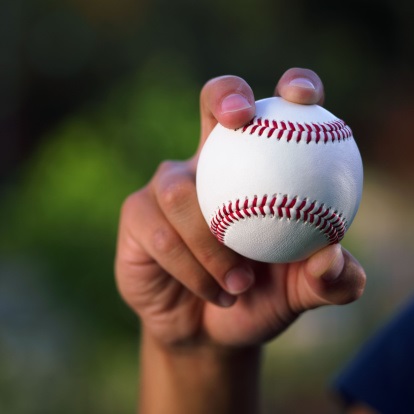Preventing baseball injuries in kids

Even though there is still snow on the ground, it’s just about time for professional baseball players and Little Leaguers to dust off their gloves and get ready for spring training. What professionals and amateurs do off the field is crucial to keeping their arms healthy, sports health experts say.
To help prevent injuries, Aaron Buchler, a physical therapist at Advocate Lutheran General Hospital in Park Ridge, Ill., encourages kids to use the off-season to work on improving their mechanics as well as strengthening their core, hips and scapular stabilizers (the muscles between the shoulder blades).
Buchler says it’s important to take a good long break for optimal performance and health.
“I also encourage athletes to participate in other sports for development of a well-rounded athlete,” Buchler says. “It’s important that kids take at least three to four months off from throwing.”
On the field, Dr. Bert Knuth, an orthopedic surgeon at Advocate Children’s Hospital in Park Ridge, Ill., encourages kids to try playing other positions besides pitcher, avoid pitching on consecutive days, adhere to Little League Baseball’s pitch count guidelines, and communicate about how their arm is feeling.
“For pitchers, it is important to emphasize control, accuracy and good mechanics,” Dr. Knuth says. “Also master the fastball first and change up second before considering breaking pitches.”
When injuries strike, it’s often a combination of overuse and poor form while pitching according to Buchler. This is because muscles, tendons and ligaments will breakdown with repetitive high intensity use. Degeneration will occur faster if kids have poor throwing mechanics or have a lack of mobility or stability or muscle weakness.
Athletes with even the best form and mechanics may get sustain injuries, but there are some critical points throughout the throwing motion that will certainly help to increase efficiency and minimize the risk for injury. For example, Buchler finds that younger athletes usually don’t understand how to utilize their core or lower extremity strength and rely only on the arm which can put them at risk for injuries.
“The most obvious treatment for overuse is rest, especially from the activity that created the injury. Ice is also used to reduce soreness and inflammation,” Dr. Knuth says. “Ibuprofen can be taken to help with pain.”
If symptoms persist, Dr. Knuth says it’s critical to contact a physician, especially if there is a lack of full-joint motion. In most cases, a “rest cure” approach will not be enough even though it allows the symptoms to subside because it creates a loss of muscle bulk, ton, flexibility and endurance.
Related Posts
Comments
One Comment
About the Author
health enews staff is a group of experienced writers from our Advocate Health Care and Aurora Health Care sites, which also includes freelance or intern writers.


















Good article Camille. I know that people don’t understand the importance of how the core connects to so many other things.